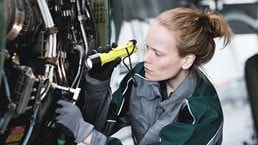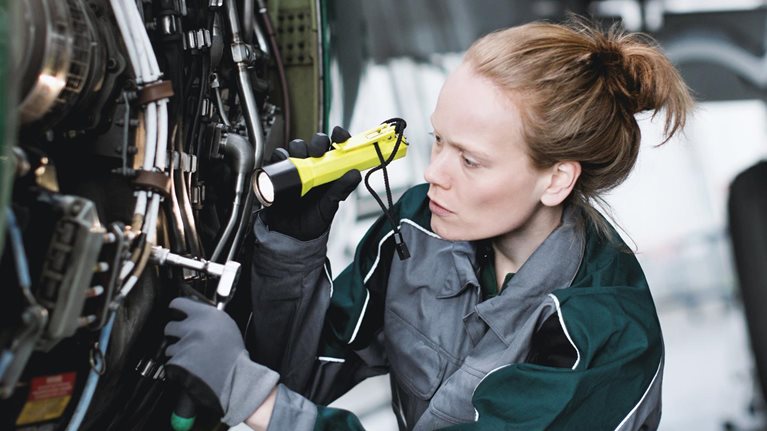It has been nearly six decades since NASA’s Apollo missions firmly embedded space exploration into the national consciousness and made the aerospace and defense (A&D) industry a favored destination for the US’s top talent. Missions to reach the stars continue to excite national and international interest, but the headlines announce the achievements of industry start-ups, rather than government agencies and incumbent organizations.
The new entrants in the A&D industry have a favorable reputation for accelerating progress, but they also create challenges for incumbent players as they seek to attract and retain the best digital and analytics talent. Further, almost every other industry and sector is recruiting for digitally focused roles. Too often, however, A&D organizations’ talent strategies and HR capabilities have not kept pace with their needs and the realities of the current market. To gain a better understanding of talent challenges and identify opportunities to reinvigorate traditional A&D recruitment, we investigated four questions:
- What are the trends impacting talent needs in A&D?
- What are the headwinds facing A&D companies in the war for talent?
- How are A&D companies’ talent strategies working to address talent needs?
- What can be done to attract and retain the right talent in A&D in the future?
Our complete findings are found in our report, Seizing the moment: Talent challenges and opportunities in aerospace and defense. You can download this report from the link at the top of this page.
Industry trends changing the face of A&D
We have identified several recent developments that are transforming A&D:
- The need for increased tech capability as automation grows. Governments and commercial customers now require increasingly technical solutions as trends like cybersecurity, automation, digitization, the Internet of Things, and artificial intelligence increase in importance. An examination of the growth in demand for certain types of skills in the coming years reinforces the talent challenge for A&D companies (exhibit).
- Increased competition for digital talent. From biotechnology to retail, organizations’ use of data is increasingly requiring a more digitally capable workforce with skills such as those of data scientists. The toughest competitors for A&D companies in the race to recruit digital talent are advanced electronics and technology companies.
- The impact of COVID-19 on workforce and talent. The pandemic has required remote work to fulfill stay-at-home and physical-distancing requirements. While challenging, this requirement has demonstrated that more roles than previously thought possible can be completed remotely. A&D companies have also responded to the pandemic by shifting to new arrangements, including remote working, to support employees’ health and safety. Additionally, companies are actively reskilling the existing workforce and reprioritizing the types of roles for which they are hiring.

Headwinds affecting talent in A&D
While A&D is benefiting from many positive trends, several headwinds could make it difficult to attract the right talent. For instance, today’s engineers typically want to own a program from start to finish, so they can see the outcome and impact of their design. However, A&D companies may instead require employees to focus on a single workstream of a larger program. In addition, potential employees often perceive A&D companies as bureaucratic and slow.
Another problem is that A&D’s reputation for innovation has weakened. In response, A&D executives should communicate their value proposition, as well as the excitement and importance of their company’s current work. This might especially appeal to millennial and Generation Z candidates.
Finally, there is a perception that A&D companies cannot offer salaries that compete with those offered by new space and software companies in Silicon Valley. While this perception may hurt recruitment, it is important to note that A&D employees are more positive about their total compensation, benefits, and work—life balance than workers in new space and software companies.
Common talent challenges in A&D
When responding to these headwinds and attempting to improve talent strategies, A&D companies may encounter difficulties because of the following issues:
- an inadequate talent pipeline, especially given the new competition from technology companies, and subpar retention efforts
- a relatively low number of employees in digital roles and a workforce that is significantly more tenured and older than those in adjacent industries, which means that many employees could soon retire
- a recruitment focus that prioritizes traditional technical skills, such as those held by aerospace engineers, rather than newer technical skills
- underdeveloped diversity, equity, and inclusion initiatives, including those for women
Would you like to learn more about our Aerospace & Defense Practice?
Addressing workforce challenges
Top talent will continue to be in high demand for the foreseeable future, and the need for a diverse, inclusive workforce will remain critical. Since business strategy and innovation in A&D will depend on securing a sufficient pool of workers with the requisite skills, the industry should consider the following three recommendations.
Tell the story of life in A&D to attract talent
Companies in other industries are developing value propositions designed to appeal to digital talent. To remain competitive, the A&D industry should emphasize its legacy, which includes decades of world-changing work, as well as the innovation, energy, and high-profile projects of A&D companies.
Reinvigorate the pipeline through reskilling and strategic partnerships
To build a workforce full of top technical talent, the A&D industry must make sustained investments in hiring. To date, some companies have had success by specifying certain high-demand skills and developing public-private partnerships with universities whose curriculums produce qualified candidates. The industry could also coordinate with companies and industry groups to reskill its existing workforce or augment its talent pipeline by expanding partnerships with institutions conducting research in areas of interest.

Call to action: How A&D companies can build the workforce of the future
Make diversity, equity, and inclusion efforts an imperative
To attract and retain premier talent and remain competitive, the A&D industry must make inclusion and diversity an imperative for its existing workforce and recruitment campaigns. The impact of diversity is well established and positive: top-quartile organizations with ethnically diverse executive teams are 33 percent more likely to outperform peers on earnings before interest and taxes. Moreover, companies with gender-diverse executive teams are 27 percent more likely to outperform peers in long-term value creation and 21 percent more likely to have above-average profitability.
Some examples of effective diversity initiatives include:
- linking performance reviews of leaders to diversity outcomes
- developing partnerships with historically Black colleges and universities and other “underleveraged” sources of talent, such as community colleges
- implementing blind hiring practices, such as removing information like name, gender, and academic backgrounds, and evaluating existing resume-screening algorithms for bias
- increasing the proportion of women and minorities in critical roles by tracking promotions and attrition in these positions, establishing sponsorship programs, and implementing more policies that enable flexible work arrangements
- identifying the top 5 percent of diverse talent in a company and creating meaningful, senior-leader-led sponsorship to enable opportunity creation and mentorship
The challenge of attracting top talent will be formidable, given that nearly every organization across several industries has prioritized talent management for key digital roles. However, A&D is in an enviable position: it has a storied legacy and a compelling value proposition to share. Now its leaders must undertake sustained, coordinated outreach and rebuild their talent pipeline.


